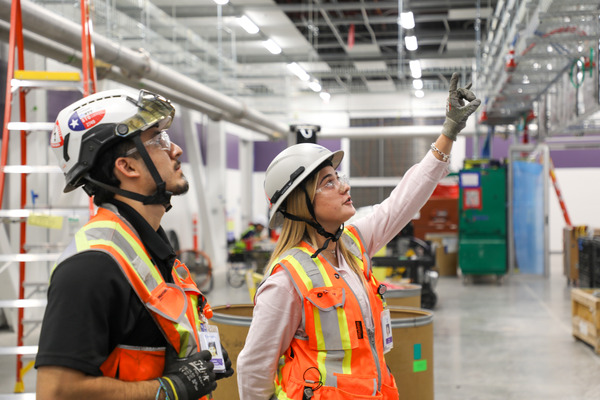
By Rebecca Leonardis, SVP of Marketing & Communications, STO Building Group
There’s good news when it comes to women in the AEC industry: There are more women in the workforce than ever. According to Environmental Financial Consulting Group (EFCG), the number of women in the architecture, engineering, and construction workforce has increased to roughly 30% in the last 15 years. New hires, in particular, rate even higher.
What does this tell us? That the work the AEC industry has put toward engaging more women in the industry is starting to pay off. But it’s not just about the numbers. Actively recruiting more women into AEC fields matters. Here’s how.
It expands the talent pool. By including more women in the talent pool, companies increase the diversity of perspectives, ideas, and skills within the industry. This not only fosters innovation but also helps to address the labor shortage that the construction industry is facing. Intentionally focusing on a wider pool of talent can lead to not only more entry-level employees but trickle all the way up to members of an organization’s board of directors. STO Building Group, for example, had only one female board member five years ago and now has three.
It changes the stereotype. Construction has a reputation for being a physically demanding field that “only a man” could handle. By actively involving girls and women and educating them about the diverse career paths available within construction – from architecture and engineering to project management, sustainability, and administration – we challenge these stereotypes and pave the way for a more unified future.
It helps close the pay gap. In the architecture and engineering fields, the average female worker makes approximately 83% of the average man’s pay, which is roughly the same as the national average, according to 2022 data from the US Bureau of Labor Statistics. Believe it or not, the construction industry is faring better—the average woman working in construction makes 96% of the average man’s pay level. With more skilled female professionals in the field, the opportunity for them to competitively earn those jobs and succeed in them only grows.
It helps ease future demand. As the need to continue updating and upgrading the world’s infrastructure continues to grow, the demand for skilled AEC professionals will only increase. If the industry invests in educating and training girls and young women today, it can ensure that AEC careers remain sustainable for generations to come. With those benefits clear, the big question is HOW can companies help educate and inspire girls to join the industry?
1. Early exposure: Work with programs like Girls in Science and the ACE Mentorship Program to introduce young girls to the industry through hands-on activities, workshops, and more formal educational programs. By supporting and volunteering in these programs, companies can show girls that they CAN have a successful, rewarding career in AEC fields. STO Building Group is involved in ACE Mentor chapters across the US, and many former ACE students have become employees.
2. Mentorship: Provide girls with access to mentorship programs and female role models within in the industry. Within our own organization, we have a national Women in Construction network that provides opportunities to network with each other and gain access to company leadership. The WIC Network also has a formal mentoring program that pairs more junior female employees with men and women who can answer questions for them, provide guidance, and introduce them to new opportunities.

3. Educational initiatives: Collaborate with schools, colleges, and local community organizations to develop initiatives that highlight opportunities in construction. Encourage girls to pursue STEM (Science, Technology, Engineering and Mathematics) subjects and provide them with resources and support to excel in these areas. This kind of partnership can be done more formally at the company level or down to the individual who volunteers in classrooms or to be a guest speaker at an event.
These can be baby steps or giant leaps. Taking action is what matters. True to the theme of this year’s Women in Construction Week, “Together We Rise,” together, our industry has made incredible strides in how we continue to grow and develop our workforce. This includes addressing workplace barriers, providing equal opportunities for advancement, and fostering a supportive and respectful environment. The gap is slowly but surely closing. By continuing to take action together, we may just bridge it once and for all.
